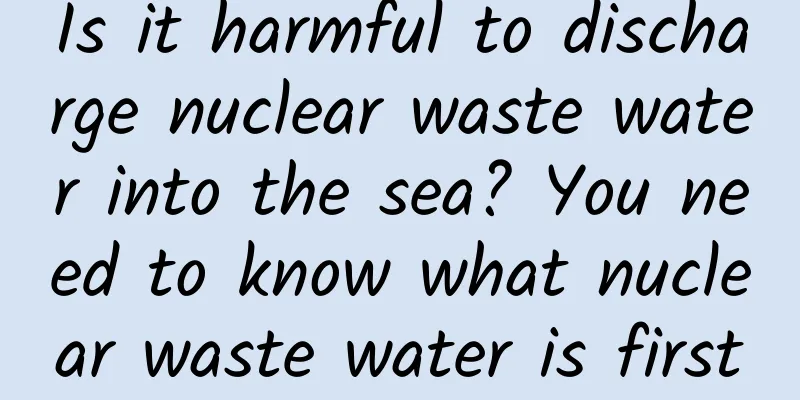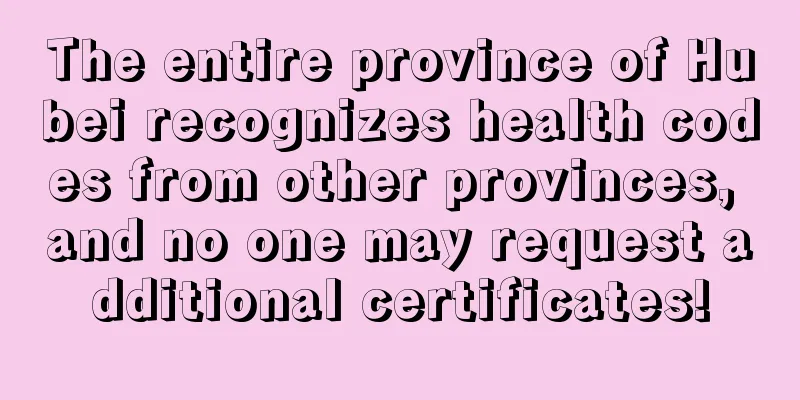Is it harmful to discharge nuclear waste water into the sea? You need to know what nuclear waste water is first

|
Is nuclear waste water harmful? This question itself cannot be called a question, because since it is nuclear waste water, it is of course harmful, because nuclear waste water refers to water containing certain radioactive elements. If the radioactive elements in nuclear waste water have been completely removed, then it is not nuclear waste water, it is just ordinary water, so as long as it can still be called nuclear waste water, it must be harmful, the only question is how harmful it is. Therefore, if someone says that the nuclear waste water to be discharged into the sea is completely harmless, it is a joke. Since it is clearly stated that it is nuclear waste water, then we need to analyze how harmful this thing is. The Fukushima nuclear waste water contains many different radioactive elements, but according to Tokyo Electric Power Company's earlier statement, they can remove all radioactive elements except tritium from the Fukushima nuclear waste water through new purification technology. We will not make unfounded doubts, but analyze the hazards of Fukushima nuclear waste water based on this statement. Tritium, as an isotope of hydrogen, is a radioactive element with a half-life of 12.3 years. We know that the shorter the half-life of a radioactive element, the greater the radiation produced per unit time. 12.3 years is already very short, so the radioactivity of tritium is still very strong. But don't worry, the half-life is not the only factor to measure the harmfulness of a radioactive element. Another key point is what kind of radiation this radioactive element produces. The decay of radioactive elements may release three different types of rays, namely alpha rays, beta rays and gamma rays. Among them, alpha rays and beta rays are almost harmless to the human body, because they have poor penetrability and cannot penetrate the human skin. The most significant ones are gamma rays, which have extremely strong penetrating power and cannot be blocked even by aluminum plates. Fortunately, tritium releases beta rays, so it is almost harmless to the human body. But don't be too happy too soon. Harmless only means that a small amount of this radioactive element is almost harmless when placed in front of us, but if it enters our body, the situation is different. Nuclear waste water containing tritium is discharged into the sea and will continue to accumulate in marine organisms through bioaccumulation. What is bioaccumulation? To put it in a more vivid way, for example, a shrimp ingests one tritium, a small fish eats 10 shrimps, and it immediately has 10 tritium, a big fish eats 10 small fish, and it has 100 tritium, a bluefin tuna eats 100 big fish, and it has 10,000 tritium, and then it is made into sashimi and served on our table. The beta rays released by tritium cannot penetrate the human skin, so it is harmless outside the body, but once it enters our body, it will combine with body fluids to become organically bound tritium, and stay in the body for a long time. At this time, the ionization effect of beta rays will begin to harm us. The most critical point is that these organically bound tritium are difficult to excrete. Over time, the harm is self-evident. It can be seen that it is short-sighted and self-deceptive to say that there is no harm because the tritium content in nuclear waste water is very low. You may wonder: nuclear wastewater is not unique to Fukushima. Doesn’t normal nuclear power plants also produce nuclear wastewater? How do they deal with it? The water in a nuclear power plant can be divided into three different loops. The water in loop one is in direct contact with the core, and while helping to cool the core, it will take away heat and turn into water vapor. The water vapor in loop one does not directly participate in power generation, but transfers heat to the water in loop two in a non-contact manner. The water in loop two absorbs the heat and turns into water vapor to drive the turbine to rotate. Then the cold water in loop three also helps the water vapor in loop two to re-condense into water in a non-contact manner. It can be seen that the only radioactive water is the water in loop one, and the water discharged to the outside is the water in loop three, which is not nuclear waste water. So, does this mean that normally operating nuclear power plants do not produce nuclear waste water? Not really. Some will still be produced, because what is said above is an ideal state. In reality, there will always be some normal or abnormal leakage of water in loop one, and a small amount of nuclear waste water will be produced at this time. How to deal with these nuclear waste waters? These nuclear waste waters will be decomposed into water and radioactive solid waste through a series of methods, that is, the radioactive elements in the nuclear waste water will be filtered out and turned into solids, and then properly treated through landfill and other methods, and the remaining water will be discharged directly into the sea. Are these waters completely free of radioactive elements? In fact, there are still some, but very few. However, this treatment method will definitely not be used in Fukushima, because they have too much nuclear waste water, and it is still being produced continuously, and the sea can only bear everything in the end. But is it really just the sea that will be blamed in the end? For more information, please follow the official account: sunmonarch |
<<: I know about mud and I know about volcanoes, but what is this "mud-spewing volcano"?
>>: A man was fined 5,000 yuan for slapping a cucumber? Is this unfair?
Recommend
Will a nap while lying on your stomach cause gastroptosis? The truth is...
Rumor: "Taking a nap lying on your stomach w...
Top 10 SaaS Product Operation Trends in 2021
Many companies and businesses came to a standstil...
Electric bikes always cause fires, so should they be banned? Professionals respond...
“Electric bicycles are causing a lot of fires, sh...
Share 4 niche but conscientious APPs: Each one is one in a hundred, please use it in a low-key manner
In our lives, almost everyone has a mobile phone....
Apple is anxious about users' dissatisfaction with iPhone battery life
Since March, Apple's recruitment website has ...
Pan Zhanle, Zheng Qinwen, Quan Hongchan...they are all extremely relaxed, without any internal friction!
The 2024 Paris Olympics has come to an end. The p...
What keeps users in your product?
Introduction I once used a canvas belt for six ye...
How much does it cost to make a Suzhou women's clothing mini program? What is the quotation for the production of Suzhou women's clothing mini program?
How much does it cost to produce the Suzhou women...
Huawei is going to make chips. Does that mean AI startups will be out of business?
Recently, Huawei launched the Da Vinci Project an...
Are there any healthy snacks that won’t make you fat? The truth →
More and more people eat snacks not only to resis...
The whole story of the suspension of LeTV's "super car" Faraday factory
When LeEco was in crisis, An electric car company...
If skin care products have good ingredients, will they definitely be effective?
Review expert: Li Xixi, PhD in Biomedical Enginee...
Sichuan scenic spots have resumed opening! What should we pay attention to? Attached is a complete list of precautions!
Due to the impact of the epidemic, many restauran...
Uninvited Guests: Alien Molecules in the Orbit of Near-Earth Asteroids
We know that in addition to the eight planets, th...









